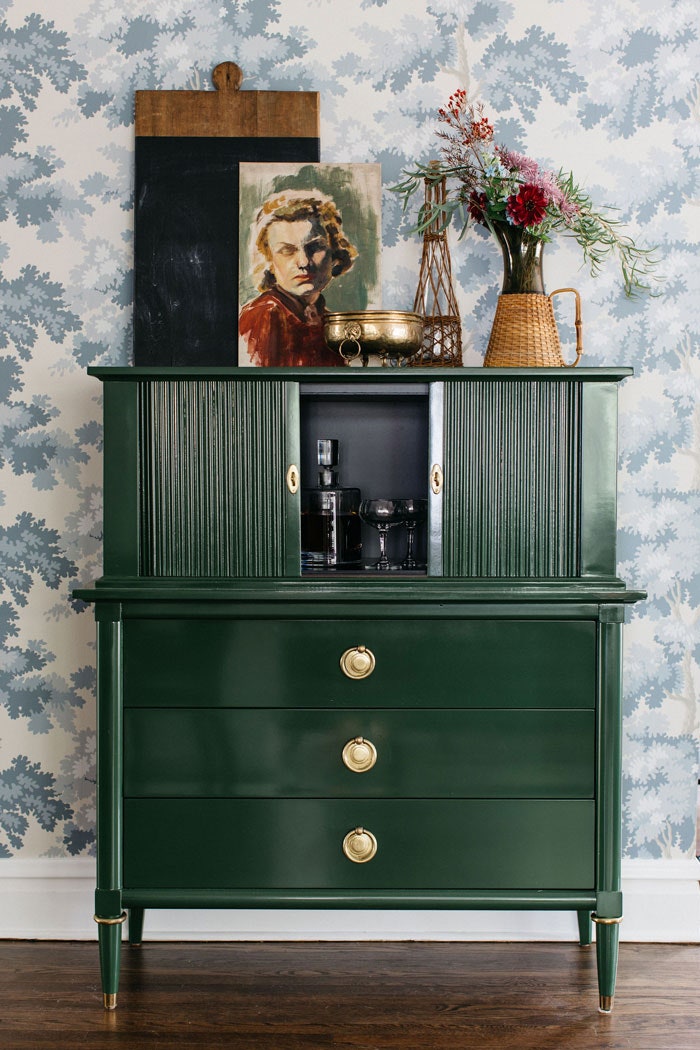Eco-Friendly Furniture: What to Look for When Buying
Looking to spruce up your home while also being kind to the environment? Look no further than eco-friendly furniture! They say that ‘one man’s trash is another man’s treasure,’ and in this case, it couldn’t be more true. Eco-friendly furniture not only adds style and comfort to your home, but it also helps reduce your carbon footprint.
So, what should you look for when buying? From sustainable sourcing to non-toxic finishes, this guide will walk you through the key factors to consider. By choosing eco-friendly furniture, you can make a positive impact on the planet without sacrificing style or quality.
Let’s dive in and discover how you can furnish your home the eco-friendly way!
Materials
When looking for eco-friendly furniture, consider the materials used in its construction. Opting for sustainable materials isn’t only good for the environment but also for your health. Look for furniture made from reclaimed wood, which reduces the demand for new trees to be cut down.
Bamboo is another great option as it’s a rapidly renewable resource that grows quickly and requires little water. Avoid furniture made from particleboard or plywood, as these materials often contain formaldehyde, a harmful chemical. Instead, choose furniture made from solid wood or metal, as these materials are more durable and can be recycled at the end of their lifespan.
Additionally, look for furniture that’s upholstered with organic or natural fabrics, such as organic cotton or hemp. These fabrics are free from harmful chemicals and pesticides, making them better for both your health and the environment.
Certifications
When buying eco-friendly furniture, it’s important to consider the certifications. Reliable eco-certifications can provide assurance that the furniture meets specific environmental standards.
Understanding sustainability standards and green labeling can help you make informed choices about the eco-friendliness of the furniture you purchase.
Reliable Eco-Certifications
Look for furniture with reliable eco-certifications to ensure its environmental friendliness. When buying eco-friendly furniture, it’s important to look for certifications that guarantee the sustainability and eco-consciousness of the product. Here are three reliable eco-certifications to consider:
1. Forest Stewardship Council (FSC): This certification ensures that the wood used in the furniture comes from responsibly managed forests. By choosing FSC-certified furniture, you’re supporting sustainable forestry practices and protecting the world’s forests.
2. Global Organic Textile Standard (GOTS): If you’re looking for upholstered furniture, GOTS certification ensures that the fabric is made from organic fibers and processed without harmful chemicals. It guarantees a safe and environmentally friendly choice for your home.
3. GreenGuard: This certification focuses on indoor air quality and ensures that the furniture has low chemical emissions. By choosing GreenGuard-certified furniture, you can be confident that you’re creating a healthy and safe environment for your family.
Sustainability Standards Explained
To further understand the environmental friendliness of eco-friendly furniture, it’s important to familiarize yourself with the different sustainability standards and certifications.
These certifications serve as indicators that the furniture has been produced in a sustainable and environmentally responsible manner.
One of the most well-known certifications is the Forest Stewardship Council (FSC) certification, which ensures that the wood used in the furniture comes from responsibly managed forests.
Another important certification is the Global Organic Textile Standard (GOTS), which guarantees that the fabrics used in the furniture are made from organic materials and have been processed in an environmentally friendly way.
Additionally, the Cradle to Cradle (C2C) certification focuses on the entire lifecycle of the product, ensuring that it can be recycled or composted at the end of its useful life.
Green Labeling Demystified
To better understand the eco-friendliness of furniture, it’s important for you to understand the certifications associated with green labeling. These certifications provide valuable information about the environmental impact and sustainability of a product.
Here are three certifications to look out for:
1. Forest Stewardship Council (FSC): This certification ensures that the wood used in furniture comes from responsibly managed forests. By choosing FSC-certified furniture, you’re supporting sustainable forestry practices and protecting natural habitats.
2. Cradle to Cradle (C2C): This certification evaluates the entire lifecycle of a product, from raw material sourcing to manufacturing and disposal. C2C-certified furniture is designed to be recycled or composted, reducing waste and promoting a circular economy.
3. Global Organic Textile Standard (GOTS): If you’re looking for upholstered furniture, GOTS certification guarantees that the fabric is made from organic fibers without the use of harmful chemicals. This not only benefits your health but also supports organic agriculture and reduces water pollution.
Sustainable Sourcing
When it comes to sustainable sourcing, there are three key points to consider.
First, you should look for furniture made from materials that have ethical origins, meaning they’re sourced responsibly and without harming the environment or communities.
Second, choose furniture that’s made from renewable resources, such as bamboo or reclaimed wood, to ensure that it isn’t contributing to deforestation or resource depletion.
Ethical Material Origins
Where can you find eco-friendly furniture that uses ethically sourced materials?

When it comes to buying furniture that aligns with your values, it’s important to consider the origins of the materials used.
Here are three places where you can find eco-friendly furniture made from ethically sourced materials:
1. Local artisans: Support local craftsmen who use sustainable practices and source materials from nearby forests and suppliers. By buying from them, you contribute to the local economy and reduce carbon emissions associated with transportation.
2. Certified sustainable brands: Look for furniture brands that have certifications like FSC (Forest Stewardship Council) or SFC (Sustainable Furnishings Council). These certifications ensure that the materials used are responsibly sourced and meet strict environmental and social standards.
3. Upcycled and reclaimed furniture: Opt for furniture made from reclaimed wood or materials that have been repurposed. This not only reduces waste but also gives a new life to materials that would otherwise end up in landfills.
Renewable Resource Use
Consider sourcing furniture made from renewable resources to ensure its eco-friendliness.
When buying furniture, it’s important to look for materials that are sustainably sourced. Renewable resources, such as bamboo, cork, and reclaimed wood, are excellent choices for eco-friendly furniture.
Bamboo, for example, grows quickly and can be harvested without harming the environment. Cork is derived from the bark of cork oak trees, which can be harvested without cutting the trees down. Reclaimed wood is salvaged from old buildings or furniture, reducing the need for new timber and preventing waste.
By choosing furniture made from renewable resources, you’re supporting sustainable practices and minimizing your environmental impact.
Additionally, these materials often possess unique textures and natural beauty that can enhance the aesthetic appeal of your home.
Eco-Certifications for Sustainability
To ensure the sustainability of your furniture sourcing, look for eco-certifications that guarantee sustainable practices. These certifications serve as proof that the furniture you’re purchasing has been produced in an environmentally responsible manner. Here are three eco-certifications to look for when buying furniture:
1. Forest Stewardship Council (FSC): This certification ensures that the wood used in the furniture comes from responsibly managed forests. By choosing FSC-certified furniture, you support the preservation of forests and the protection of wildlife habitats.
2. Cradle to Cradle (C2C): C2C certification focuses on the entire lifecycle of the furniture, from its production to its disposal. It guarantees that the materials used are safe for human health and can be recycled or reused after its useful life.
3. Global Organic Textile Standard (GOTS): If you’re looking for upholstered furniture, GOTS certification ensures that the textiles used are made from organic fibers and produced under environmentally and socially responsible conditions.
Non-Toxic Finishes
Look for furniture with zero VOC finishes to ensure that you’re avoiding toxic chemicals. VOCs, or volatile organic compounds, are harmful chemicals commonly found in furniture finishes, such as paints, varnishes, and stains. These compounds release gases into the air, contributing to indoor air pollution and negatively impacting your health and the environment.
By choosing furniture with zero VOC finishes, you can minimize your exposure to toxic chemicals and create a healthier living environment. Zero VOC finishes are made without harmful solvents, which means they don’t release harmful gases into the air. This is particularly important if you or your family members have allergies, asthma, or sensitivities to chemicals.
When shopping for eco-friendly furniture, look for labels or certifications that indicate the presence of zero VOC finishes. These certifications are often provided by independent organizations that test and verify the absence of harmful chemicals in the furniture finish. Examples of such certifications include GREENGUARD and SCS Indoor Advantage Gold.
In addition to zero VOC finishes, consider furniture finishes made from natural and non-toxic materials, such as water-based paints or finishes made from plant oils and waxes. These alternatives aren’t only safer for your health but also better for the environment, as they produce fewer pollutants during the manufacturing process.
Durability and Longevity
Look for furniture that’s built to last. When buying eco-friendly furniture, durability and longevity are important factors to consider. You want furniture that will stand the test of time and not need to be replaced frequently.
Here are three reasons why investing in durable and long-lasting furniture is worth it:
1. Cost-effectiveness: Buying furniture that’s built to last may initially be more expensive, but in the long run, it can save you money. Instead of constantly replacing worn-out furniture, investing in high-quality, durable pieces can save you from spending money on replacements.
2. Environmental impact: By choosing furniture that’s designed to last, you’re reducing waste and minimizing your environmental footprint. Sustainable materials and manufacturing processes are used to create furniture that can withstand everyday wear and tear, ensuring that it stays out of landfills for a longer period.
3. Peace of mind: Knowing that your furniture is built to last gives you peace of mind. You can enjoy your furniture without worrying about it breaking or falling apart. This allows you to fully appreciate and enjoy the investment you’ve made in your eco-friendly furniture.
Ethical Manufacturing Practices
Why is it important to consider how furniture is ethically manufactured when buying eco-friendly furniture?
When purchasing eco-friendly furniture, it’s crucial to ensure that it’s produced using ethical manufacturing practices. Ethical manufacturing practices go beyond environmental considerations and focus on the treatment of workers and their working conditions. By choosing furniture that’s ethically manufactured, you’re supporting companies that prioritize fair wages, safe working conditions, and workers’ rights. This helps to create a more sustainable and equitable supply chain.
When furniture is ethically manufactured, it means that workers are treated with respect and dignity. They’re provided fair wages and benefits, ensuring that their basic needs are met. Ethical manufacturing also means that workers aren’t subjected to hazardous working conditions or exploitative practices. By supporting companies that prioritize ethical manufacturing practices, you’re contributing to the well-being of the workers and promoting a more socially just industry.
Furthermore, ethical manufacturing practices often involve transparency and accountability. Companies that are committed to ethical manufacturing are more likely to provide information about their supply chain and production processes. This transparency allows consumers to make informed choices and support companies that align with their values.
Disposal and End-Of-Life Options
When purchasing eco-friendly furniture, it’s important to consider the available disposal and end-of-life options. By choosing furniture that can be easily disposed of or recycled, you’re taking a proactive step towards reducing waste and minimizing your carbon footprint.
Here are three key factors to keep in mind when considering the disposal and end-of-life options for eco-friendly furniture:
1. Recyclability: Look for furniture that’s made from materials that can be recycled, such as wood, metal, or plastic. This ensures that when the time comes to dispose of the furniture, it can be easily recycled and turned into new products, reducing the amount of waste that ends up in landfills.
2. Take-back programs: Some furniture manufacturers offer take-back programs, where they take back old furniture and recycle or repurpose it. This not only helps in proper disposal but also promotes a circular economy, where materials are reused instead of being discarded.
3. Donation: Consider donating your old furniture to charitable organizations or thrift stores. By doing so, you give your furniture a second life and help those in need. Additionally, it prevents the furniture from ending up in landfills and contributes to a more sustainable and responsible approach to consumption.
Frequently Asked Questions
How Do I Know if a Piece of Eco-Friendly Furniture Is Truly Made From Sustainable Materials?
To know if eco-friendly furniture is made from sustainable materials, look for certifications like FSC or Rainforest Alliance. Check if the furniture is made from reclaimed or recycled materials. Research the company’s commitment to sustainability.
Are There Any Specific Certifications I Should Look for When Buying Eco-Friendly Furniture?
When buying eco-friendly furniture, look for specific certifications. These certifications ensure that the furniture is made from sustainable materials. Look for labels like FSC, GREENGUARD, or Cradle to Cradle Certification to make an informed choice.
What Are Some Common Sustainable Sourcing Practices Used in the Furniture Industry?
Some common sustainable sourcing practices used in the furniture industry include using reclaimed or recycled materials, opting for sustainably harvested wood, and supporting fair trade practices. Look for these when buying eco-friendly furniture.
Are There Any Non-Toxic Finishes That Are Commonly Used in Eco-Friendly Furniture?
There are non-toxic finishes commonly used in eco-friendly furniture. Look for finishes labeled as low or no VOC, which means they have minimal or no volatile organic compounds that can harm your health or the environment.
How Can I Ensure That the Eco-Friendly Furniture I Purchase Is Manufactured Ethically?
To ensure your eco-friendly furniture is manufactured ethically, research the company’s practices, certifications, and supply chain. Look for transparency in sourcing, fair labor standards, and sustainable manufacturing processes.
Conclusion
So, when you’re in the market for eco-friendly furniture, remember to look for materials that are sustainable and certified. Make sure the furniture is sourced ethically and has non-toxic finishes.
Consider the durability and longevity of the piece, as well as the manufacturer’s ethical practices. And don’t forget to think about the end-of-life options a content nd disposal methods for the furniture.
By considering all these factors, you can make a responsible and eco-conscious choice for your home.








